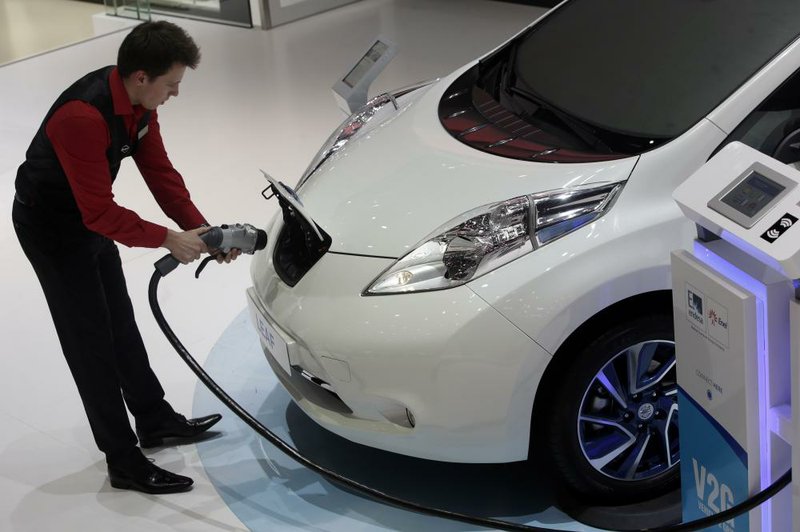Electric vehicles appear to be growing in popularity, yet skeptics remain among drivers who fear that their car batteries could run out of charge and strand them far from a recharging station.
But a new study published Monday in the science journal Nature Energy by researchers from MIT and the Santa Fe Institute found that 87 percent of people's daily driving could be handled on a single electric-car charge.
The new research, based on a vast analysis of second-by-second U.S. driving patterns and other evidence, finds that in a surprisingly large number of daily-driving cases, range anxiety may be overblown.
"What we found was that 87 percent of vehicles on the road could be replaced by a low-cost electric vehicle available today, even if there's no possibility to recharge during the day," said Jessika Trancik, a researcher with MIT's Institute for Data, Systems and Society who was the study's senior author.
Granted, even the remaining 13 percent of daily car energy use that exceeds a single battery's capacity could be enough to drive lingering resistance to electric vehicle adoption -- since nobody wants to find themselves out of power on the road.
Still, it's hard to understate the importance of vanquishing this concern, because several other factors already tilt decidedly in favor of electric vehicles.
For instance, research has suggested that while there are a number of regional variations, it is greener to drive on electricity than on gasoline, in terms of the resulting emissions.
The new study is a modeling exercise based on an enormous amount of data. That's necessary because precisely how much energy an electric vehicle uses -- and thus, how quickly it depletes its battery -- depends not only on the distance driven but also on subtle factors such as the air temperature, the time spent idling and how rapidly the driver accelerates.
The study thus combined hourly temperature data in different U.S. regions, survey data about trip lengths, empirical data on the fuel economy of different cars, and GPS-derived data on the speeds of vehicles and how they vary on a second-by-second basis.
The study assumed a modestly priced electric vehicle, the 2013 Nissan Leaf, and daily charging overnight.
That 2013 model is worth bearing in mind -- the study noted that over time, as vehicle batteries improve and become cheaper, ranges should continue to expand and the daily driving that can be accomplished on a single charge should only increase.
"Most trips can be made in an EV with current battery size," wrote Willett Kempton, of the University of Delaware's Center for Carbon-Free Power Integration, in an accompanying commentary on the study.
A striking thing about the study is that it didn't find much regional variability in the key result -- that about 87 percent of daily car energy use can be accomplished on one charge of an electric vehicle's battery.
"It really varies only from 84 [percent] to 93 percent across very different kinds of U.S. cities," Trancik said. "And so, that's important because it means that there's a high potential for electrification, not just in dense urban areas, but in sprawling cities."
There are many limitations that prevent suddenly swapping out large numbers of current vehicles for electric ones.
Not everybody has access to a vehicle charging station at night, for instance -- consider apartment dwellers who park on the street. And concerns persist about limitations on long vacation road trips.
That's one reason the Obama administration recently laid out plans to increase the number of charging stations across the country, to try to make faster, more frequent charging possible.
Trancik has not ignored potential logistical problems. For instance, she said the research points to the need to develop robust car sharing for gas-fueled vehicles, so that people know those are available in a pinch for longer distances.
The study finds that a potential transition to electric vehicles would drastically cut emissions from the U.S. transportation sector.
"If that 90 percent adoption potential was reached, then one could replace about 60 percent of gasoline consumption, but that would only reduce emissions about 30 percent, which is still a very significant number," Trancik said.
Business on 08/16/2016
